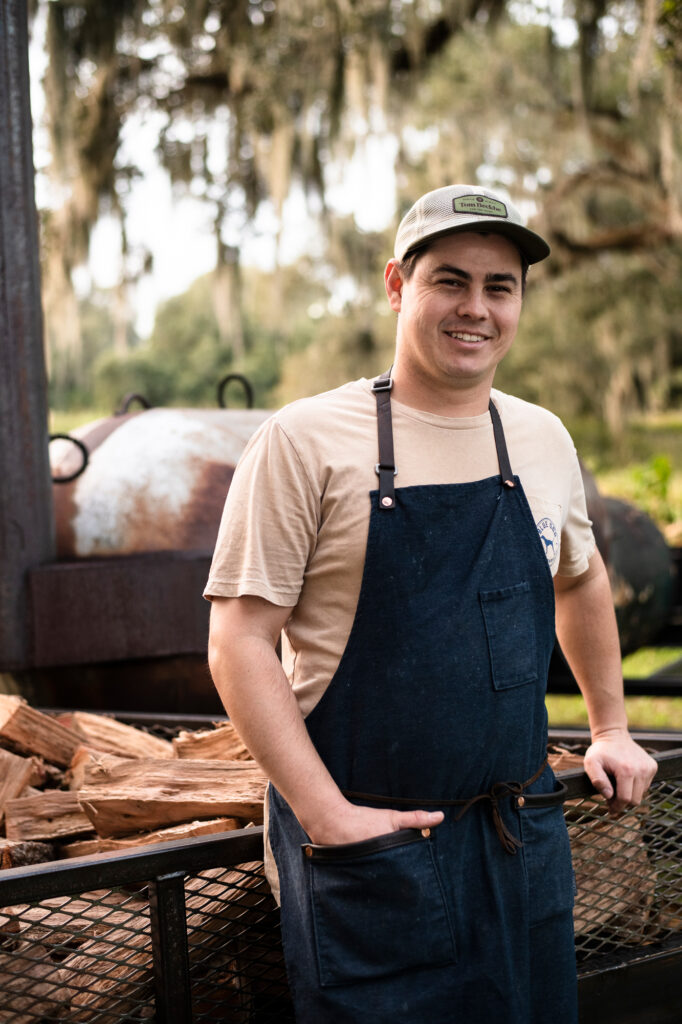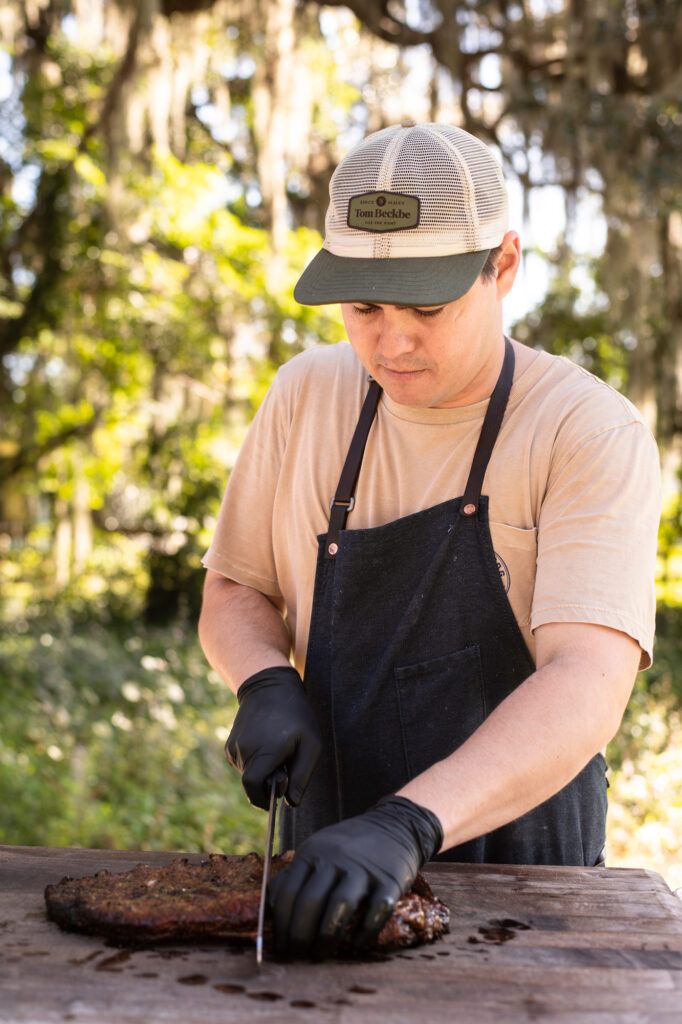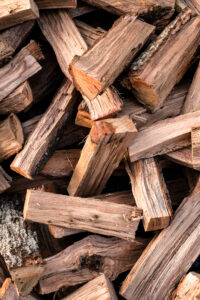Photography by Jason Stephens
Lakeland’s celebrated pitmaster, Blue Dog Craft Barbecue, shares their secrets to grilling some of the best barbecue in town.

Max Miller, The pitmaster behind Blue Dog Craft Barbecue
Appearing through the smoke of barbecue restaurant chains over the last decade and a half are the artisan pitmasters whose commitment to cooking delicious meats has created wait-in-line-for-hours eaters all over the country. Like craft brewers using the finest ingredients to produce small batches with traditional methods, craft barbecuers employ painstaking preparation, the best inputs, and constant vigilance to make food so good it should be photographed and written about. Such is the case with Lakeland’s own Blue Dog Craft Barbecue.
Although pitmaster Max Miller, 32, has always enjoyed cooking, it was only three years ago that he drew inspiration from celebrity craft barbecuer Aaron Franklin and savory photographs of barbecue on social media and resolved to fire up his own grill. By interesting coincidences, Max’s extended family includes a welder and an arborist. So Blue Dog’s story isn’t simply one of making delicious food. Max, drawing on the help of these talented family members, made the grill he uses today, and he sources and prepares his pit’s wood.
At first, Miller enjoyed cooking barbecue just for his friends. But soon he realized that he wanted to make this tasty obsession available to Lakelanders, and Blue Dog was born. It seems Lakelanders consider that a brilliant and delicious move. Today’s customers enjoy quintessential barbecue items of brisket, ribs, pulled pork, and even sausage that Miller makes from scratch.
“ The best way to make consistently great barbecue is to control as many factors as possible. And then just push yourself until you get the results you want. ”
As he explains, the best way to make consistently great barbecue is to control as many factors as possible. And then just push yourself until you get the results you want. Miller says he’s still learning through inspiration, constantly evolving, and trying new things. He’s always kept notes about the cooking process, and now, with countless cooks under his belt, he’s noticed an intuition developing because he’s internalized the details.
No shortage of ink — or sauce — has been spilled in describing how to create barbecue that keeps hungry people coming back for more. This is how Blue Dog achieves it with its brisket.
 THE RIGHT TRIM
THE RIGHT TRIM
The trim — the meat, fat, and the physical shape of the combination — is critical. About an inch of fat is removed leaving about a quarter inch. Too much or too little fat can make the texture spongy or dry. The shape must be conducive to the grill’s airflow so the fat, along with seasoning, tenderizes and flavors the brisket properly during the long, slow cooking hours.
THE RIGHT SEASONING
Blue Dog’s simple brisket dry rub is salt and pepper. The seasonings penetrate through the entire brisket during the cooking process. Although it might be tempting to get fancy, pitmasters know that too much of a good dry rub can mask the amazing smoke-enhanced meat flavor.
 THE RIGHT WOOD
THE RIGHT WOOD
In the beginning, Miller bought wood from barbecue suppliers but wasn’t satisfied with the meat’s ultimate flavor. Now he sources oak locally, ages it for a year, and splits it himself. Aging the wood — as simple as stacking it up outside and waiting — allows it to dry. Although pitmasters can use just about any type of wood for their cook, aged oak is known to produce a clean, even, mild smoke that suits Blue Dog’s brisket well.
THE RIGHT AIRFLOW
Miller built his grill after the design popularized by barbecue muse Aaron Franklin. It’s an offset smoker with the fire on one end and the smokestack on the other. The aged oak’s smoke is drawn over the brisket, fat side up with its point closest to the fire, working by convection rather than direct heat. The large volume of airflow in combination with the perfectly shaped trim delivers the outstanding tastes. Max keeps a pan of water in the grill to ensure the meat doesn’t dry out. Fire management is critical; not only does the temperature need to remain consistent but ample oxygen must be present. Too little oxygen results in creosote that makes meat bitter.
THE RIGHT TIME
Brisket is all about patience, but Miller says the waiting has become second nature. Blue Dog’s brisket spends 16 plus hours on the grill transforming from raw slab to mouth-watering meals. That’s about 60 to 75 minutes per pound of brisket around 250°F. Miller wraps each piece of meat in butcher paper for the last few hours of the cook. Gone are the days when he would pull all-nighters as you might have seen the pitmasters do in the recent Netflix Chef’s Table barbecue series. Now he starts early in the morning so he can complete the cook and it can rest overnight.
 THE RIGHT REST
THE RIGHT REST
When Miller removes the brisket from the grill, there’s still plenty of time left in the preparation. Even novice grillers know there’s magic in the rest time as juiciness becomes more evenly distributed throughout the cut. Max points out that it’s not really even rest since the meat continues to cook though it’s removed from the heat source. Brisket is thick, so Blue Dog’s version rests for 12 hours.
THE RIGHT SAUCE
Barbecue purists maintain that if it’s cooked right, you won’t need any sauce. But many of us love the sweet, hot, or barbecue sauces to enhance our brisket, and that’s just fine, too. Blue Dog makes two varieties — a House Sauce that’s a bit sweet typically used on pork butts and ribs, and a mustard sauce.
[modula id=”23677″]

 THE RIGHT TRIM
THE RIGHT TRIM THE RIGHT WOOD
THE RIGHT WOOD THE RIGHT REST
THE RIGHT REST